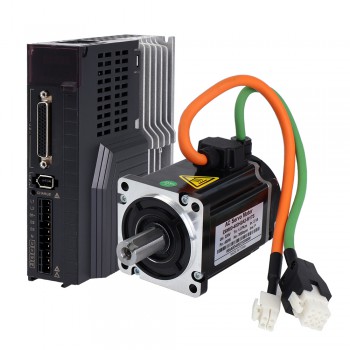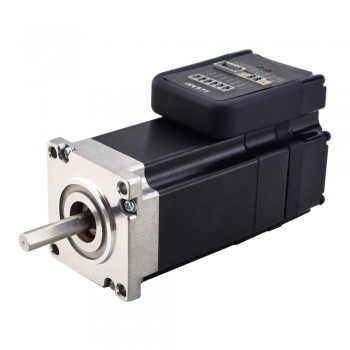Braking principle of servo motor from Minnie's blog
1.Brief description of the working principle of servo motor
Servo motor is a high-performance and high-precision motor widely used in the field of industrial automation. Its main feature is that it can accurately control the output torque and angle according to the command signal, and it has the advantages of fast response, high precision and strong stability.
The control system of servo motor is generally composed of power supply, controller, encoder, driver and motor. Among them, the driver is the core part of the servo motor control system. It controls the speed and direction of the motor by controlling the magnitude and direction of the current to achieve precise control.

2.Speed regulation method of servo motor
1.Voltage speed regulation method: speed regulation is achieved by changing the voltage at both ends of the motor. This method has a simple structure and is easy to implement, but the efficiency is low and the control accuracy is relatively low.
2.Current speed regulation method: speed regulation is achieved by changing the current of the motor. This method has high speed regulation accuracy and fast response speed, but the structure is complex and the cost is high.
3.Pulse width modulation (PWM) speed regulation method: speed regulation is achieved by changing the pulse width of the motor power supply. This method can achieve a wider speed regulation range and high efficiency, but the structure is complex and the cost is high.
4.Field Oriented Control (FOC) Speed Control Method: This is a speed control method based on the principle of vector control, which can achieve high-precision speed and torque control and is suitable for high-performance application scenarios.
5.Pulse counting speed control: Control the speed and position of the motor by sending different numbers of pulse signals to the servo drive, which is suitable for occasions that require precise position control.
6.PID speed control: Control the position and speed of the motor by adjusting the position proportional coefficient, differential coefficient and integral coefficient, which is suitable for applications that require precise speed and position control.
3.Servo Motor Braking Principle
The braking of the servo motor is mainly to stop or keep the motor stationary. The mechanical braking is mainly achieved by mechanical brakes, and the electrical method can be achieved by the following four methods:
1.Direct power-off braking
Direct power-off braking refers to directly cutting off the power supply, so that the motor loses the driving force and stops rotating directly. This method is simple to brake, but it has a greater damage to the motor's back electromotive force and is easy to damage the motor or drive.
2.Reverse power supply braking
Reverse power supply braking refers to braking by reversing the polarity of the power supply. The motor will generate reverse torque, thereby achieving rapid stopping. This method is suitable for occasions where precision is not required.
3.Short-circuit braking
Short-circuit braking refers to directly short-circuiting the two ends of the motor to produce a damping effect on the motor, and the motor torque decreases rapidly, thereby achieving a quick stop. This method causes less damage to the motor and the driver, and has higher precision.

4.Maintaining current braking
Maintaining current braking refers to controlling the current of the driver to make the motor rotate to 0 position and stop. This method has a stable braking effect and causes little damage to the motor and driver. Since the current needs to be controlled, a more precise controller is required.
In summary, the braking of the servo motor can be achieved either mechanically or electrically. Among them, electrical braking is widely used because of its stable braking effect and little damage to the motor and driver.
Source:https://www.storeboard.com/blogs/apps-and-software/braking-principle-of-servo-motor/5815261

The Wall